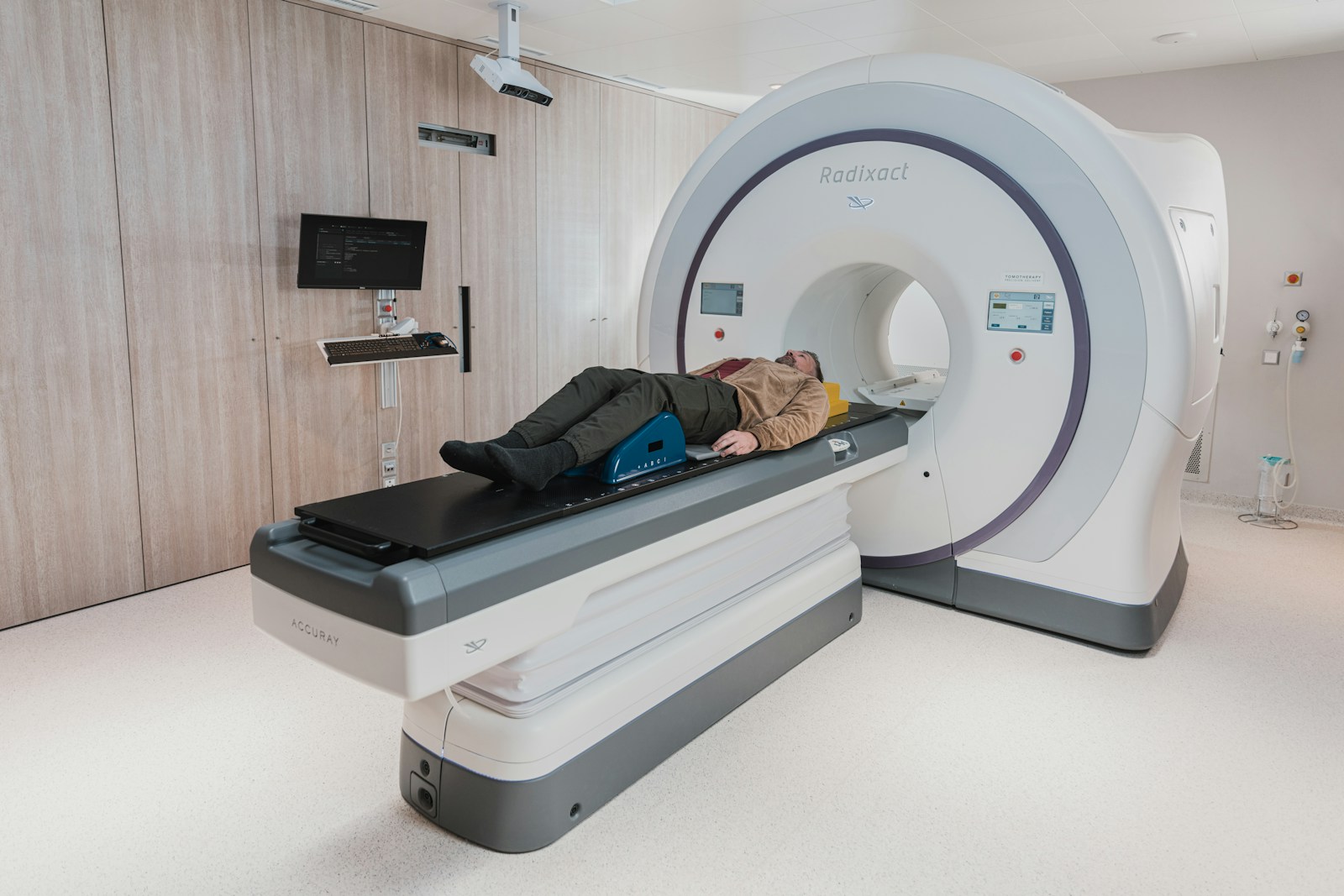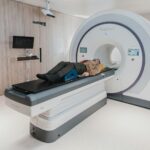CT scanning, also known as computed tomography scanning or CAT scanning (Computed Axial Tomography), is a medical imaging technique used to create detailed cross-sectional images of the body’s internal structures. It combines X-ray technology with computer processing to produce detailed images that can reveal abnormalities, injuries, or diseases in various parts of the body.
Here’s how CT scanning works:
- X-ray Beams: During a CT scan, the patient lies on a table that moves through a doughnut-shaped machine called a CT scanner. The scanner contains an X-ray tube that rotates around the patient, emitting narrow beams of X-rays.
- X-ray Detection: Opposite the X-ray tube, there is a detector that measures the amount of X-rays that pass through the body. As the X-ray tube rotates, multiple X-ray beams are emitted from different angles.
- Data Acquisition: The X-ray beams pass through the body and are attenuated (absorbed or scattered) by the tissues they encounter. The detector records the amount of X-rays that reach it, creating a series of raw data called “projections.”
- Image Reconstruction: The raw projection data is processed by a computer to reconstruct cross-sectional images, or “slices,” of the body. The computer uses sophisticated algorithms to analyze the data and create detailed images of internal structures.
- Image Display: The reconstructed images are displayed on a computer monitor, allowing radiologists and other healthcare professionals to visualize the anatomy and identify any abnormalities or pathology present.
CT scanning is used for a wide range of diagnostic purposes, including:
- Detection of Tumors and Abnormalities: CT scans can detect tumors, cysts, and other abnormalities in various organs and tissues, including the brain, chest, abdomen, pelvis, and musculoskeletal system.
- Evaluation of Trauma and Injuries: CT scanning is commonly used in emergency settings to assess traumatic injuries, such as fractures, internal bleeding, and organ damage.
- Diagnosis and Monitoring of Disease: CT scans can help diagnose and monitor various medical conditions, including cardiovascular disease, lung disorders, gastrointestinal issues, and neurological disorders.
- Guidance for Procedures: CT imaging is often used to guide minimally invasive procedures, such as biopsies, drainage procedures, and interventional radiology treatments.
CT scanning is a valuable tool in modern medicine, providing detailed anatomical information that helps healthcare providers make accurate diagnoses, plan treatments, and monitor patients’ progress over time. However, it’s essential to minimize radiation exposure by using CT scans judiciously and considering alternative imaging modalities when appropriate.
















